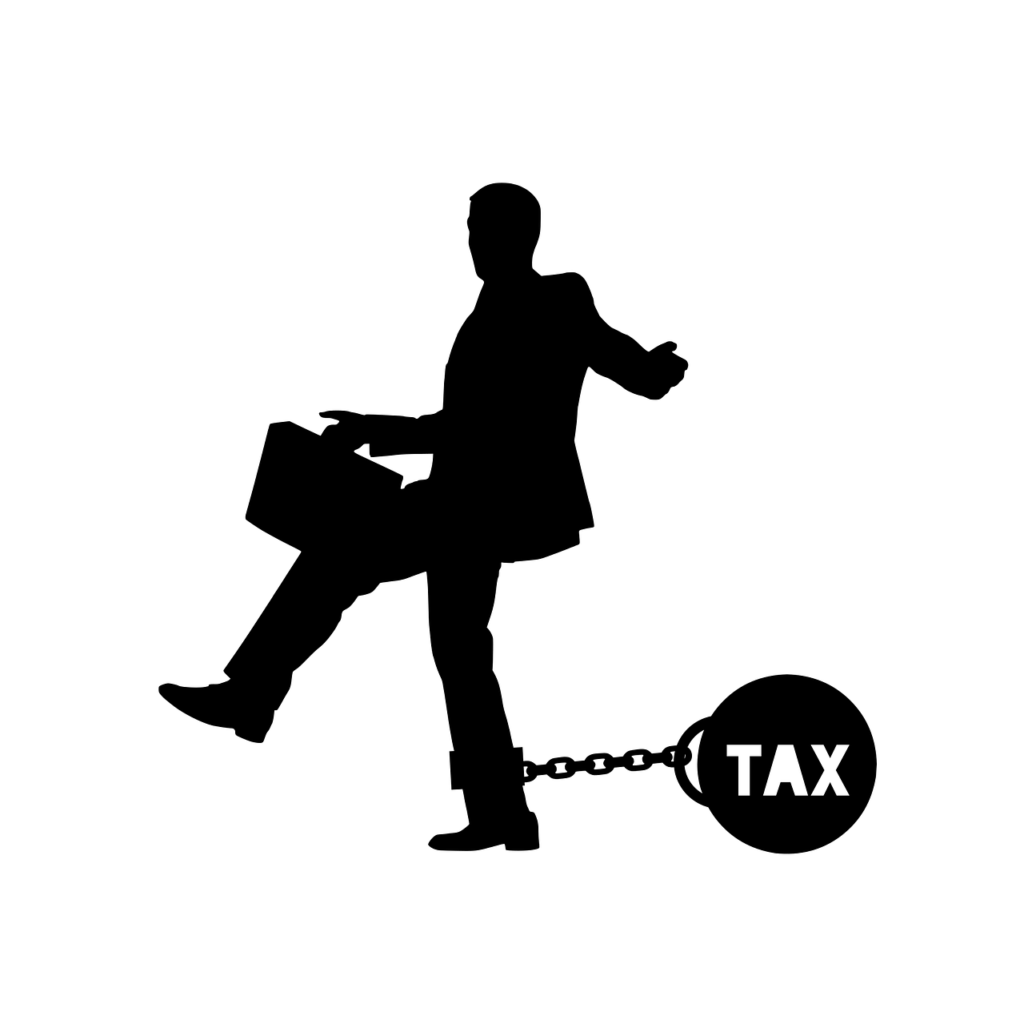Getting a refund for a gift can often be a confusing and frustrating process, but understanding the basics can make it much easier. In this article, we will explore the important information you need to know when seeking a refund for a gift. From the importance of keeping the receipt to the timeframe limitations and the possible options for refund, we will guide you through the essential steps to ensure a smooth and successful return. So, if you’ve received a gift that doesn’t quite hit the mark, read on to learn how you can navigate the refund process with confidence.
Understanding Gift Return Policies
Checking the Store’s Return Policy
When it comes to returning a gift, one of the first steps you should take is to familiarize yourself with the store’s return policy. Each retailer may have different guidelines and requirements for returning items, so it’s important to understand their specific policies. Look for information on their website or ask a store associate for details on how long you have to return the gift, what condition it should be in, and whether there are any specific requirements, such as having the original packaging or receipt.
Understanding Time Limits for Returns
Gift return policies often have time limits within which you can return an item. It’s essential to know these time limits to ensure that you don’t miss out on the opportunity to return the gift. Some stores may have a relatively short time frame, such as 14 or 30 days, while others may offer more extended periods, especially during the holiday season. Mark your calendar and make sure you return the gift within the specified time to avoid disappointment.
Understanding the Different Types of Returns
Gift return policies generally fall into different categories, each with its own set of rules. Common types of returns include a full refund, store credit, exchanges, or a combination of these options. Some items may be eligible only for an exchange or store credit, especially if they are non-refundable. Understanding the different types of returns will help you navigate the process and make the best decision based on your preferences and the retailer’s policy.
Checking for Exceptions or Restrictions
While most stores have general return policies, it’s important to be aware of any exceptions or restrictions that may apply to certain items or scenarios. For example, some stores may not accept returns on final sale or clearance items, personalized or customized products, perishable goods, or items purchased during a specific promotional period. Checking for exceptions or restrictions will help avoid any surprises and ensure you understand what can and cannot be returned.
Considerations for Online Purchases
Returning an online gift comes with its own set of considerations. As the gift recipient, you may need to go through specific steps to initiate the return process. These steps might include contacting customer support, creating a return request online, or printing off a return label. Additionally, be aware of any shipping fees or restocking charges that may apply when returning an item purchased online. Be sure to read and follow the online retailer’s return instructions carefully to ensure a smooth and hassle-free return experience.
Knowing Your Rights as the Gift Recipient
Understanding Consumer Laws
As a gift recipient, it’s valuable to have a basic understanding of consumer laws that protect your rights when returning items. These laws may vary depending on your jurisdiction, but generally, they aim to ensure fair treatment for consumers. Familiarize yourself with laws related to return policies, refunds, and consumer rights in your country or state to have a better understanding of your rights as a gift recipient.
Understanding Gift Receipts and Proof of Purchase
In many cases, having a gift receipt or proof of purchase can make the return process much smoother. While it’s not always necessary, it helps the store verify the item’s purchase and may increase your chances of receiving a refund or exchange. If you didn’t receive a gift receipt, consider reaching out to the gift giver and politely ask if they have a copy of the receipt that they can provide you. Having a gift receipt can remove some of the barriers to a successful return.
Knowing the Difference between Store Policies and Legal Rights
It’s important to understand that store return policies may not always align with your legal rights as a consumer. While stores have the right to set their own rules for returns, they must still comply with local consumer protection laws. Knowing the difference between store policies and legal rights can empower you to advocate for yourself when necessary and ensure that you receive fair treatment when returning gifts.
Knowing Your Rights for Faulty or Defective Gifts
If you receive a gift that is faulty or defective, it’s crucial to know your rights for returning such items. In many cases, retailers are obligated to accept returns for items that are damaged, broken, or do not work as intended. These rights may extend beyond the typical return policy time limit. Be aware of the specific guidelines and steps you need to take when returning a faulty or defective gift to ensure a successful resolution.
Finding Out About Extended Return Policies or Store Guarantees
Some retailers may offer extended return policies or store guarantees for certain items. These policies can provide you with additional time or flexibility to return a gift. It’s worth investigating whether the store offers such options and what their specific terms and conditions are. Extended return policies and store guarantees can be particularly helpful when returning gifts that may require more time to test or evaluate, such as electronics or appliances.

Steps to Take for Returning a Gift
Locating and Keeping All Original Packaging
When returning a gift, it’s important to locate and keep all the original packaging, including boxes, tags, and labels. Retailers often require that items be returned in their original condition, and having the packaging intact can make the process smoother. If the gift came with any accessories, such as spare parts or instruction manuals, be sure to include them as well. Keeping everything together will help ensure that the store accepts the return without any issues.
Retaining or Obtaining the Receipt (If Available)
Having the receipt for the gift can save you time and potentially increase your chances of a successful return. Even if the gift receipt wasn’t included or you don’t have access to it, check with the gift giver to see if they can provide you with a copy. If the gift was purchased online, search for any order confirmations or invoices that may serve as proof of purchase. Retaining or obtaining the receipt is especially important when returning higher-value items or when the store requires proof of purchase for returns.
Contacting the Gift Giver for Important Information
In some cases, reaching out to the gift giver can provide you with valuable information that can facilitate the return process. They may have additional details about the purchase, such as the date, store, or any special considerations they encountered. If there are any specific instructions or details about the gift that can help with the return, be sure to ask the gift giver for that information. Open and honest communication can help ensure a smooth return experience for everyone involved.
Finding Out If the Gift Is Returnable
While most gifts are returnable, it’s important to confirm whether the specific item you received can be returned. Some retailers have restrictions on certain items, such as underwear, hygiene products, or customized goods, for hygiene or safety reasons. The retailer’s website or return policy should provide information on the return eligibility of different product categories. If you’re unsure, reach out to the store or consult their return policy to avoid any surprises when attempting to return the gift.
Understanding the Store’s Return Process
Each retailer may have a specific process for returns, so it’s important to understand and follow their instructions carefully. Most stores will have designated return counters, customer service desks, or online platforms where you can initiate the return. They may require specific forms to be filled out, or they may provide a return shipping label if the item was purchased online. Familiarize yourself with the store’s return process to ensure that you follow the correct steps for returning the gift.
Exploring Alternative Options to Returning a Gift
Exchanging the Gift for a Different Item
If the gift you received isn’t quite what you had in mind, one option is to exchange it for a different item at the same store. Many retailers allow for exchanges within their return policy timeframe, provided the item is in new and unused condition. Check with the store’s policies regarding exchanges to ensure that this option is available. Exchanging the gift for something you truly want can be a great way to make the most out of an unwanted present.
Obtaining Store Credit or a Gift Card
Another alternative to returning a gift for a refund is to ask for store credit or a gift card. Some retailers may offer this option, especially if the item is non-refundable, part of a final sale, or if you prefer to shop at the same store but don’t see an immediate replacement. Store credit or a gift card allows you to choose something at a later time while still getting value out of the original gift.
Re-gifting the Unwanted Gift
If you receive a gift that you know someone else would appreciate more, re-gifting can be a viable option. Before re-gifting, ensure that the item is new, unused, and in its original packaging. Consider the taste and preferences of the recipient to ensure that you’re giving the gift to someone who will genuinely appreciate it. Remember to remove any personalized or customizations that may identify the original gift recipient.
Donating the Gift to Charity
If the gift is not something you can personally use or re-gift, consider donating it to charity. Many charitable organizations accept donations of new, unopened items to help those in need. Not only does donating the gift benefit others, but it can also give you a sense of satisfaction knowing that it will be put to good use by someone who truly needs it. Look for local charities or organizations that accept donations and contact them to inquire about their specific requirements.
Selling the Gift
If you’re comfortable with the idea, selling the unwanted gift can be a way to recoup some of its value. Online marketplaces and classified platforms offer opportunities to sell various items, including gifts. Take clear and detailed photos, prepare an accurate description, and set a reasonable price to attract potential buyers. Be sure to follow the platform’s guidelines and ensure a secure and reliable transaction. Selling the gift allows you to turn an unwanted item into cash that can be used for something you truly desire.
Tips for a Successful Gift Return
Checking for Return Shipping Fees or Restocking Charges
When returning a gift, it’s important to be aware of any potential costs associated with the return. Some retailers may charge return shipping fees or restocking charges, especially for online returns. Check the store’s return policy or contact their customer service to find out if there are any fees or charges you need to consider. Being aware of these costs will help you make an informed decision and avoid any surprises when returning the gift.
Keeping the Gift in New and Unused Condition
To increase your chances of a successful return, it’s essential to keep the gift in new and unused condition. Most retailers require items to be returned in the same condition as when they were purchased, with all original packaging, tags, and accessories intact. Avoid using or wearing the gift before deciding to return it, as this may invalidate the return eligibility. By keeping the gift in pristine condition, you ensure that the return process goes smoothly and that you have the best chance of receiving a refund or exchange.
Following the Store’s Return Instructions Carefully
Each retailer may have specific return instructions that you should follow to ensure a successful return. Whether it’s filling out a return form, including a copy of the receipt, or following specific packaging requirements, it’s crucial to read and understand the store’s return instructions. Following these instructions carefully will help prevent any delays or complications in the return process and increase the likelihood of a smooth transaction.
Providing Necessary Documentation
When returning a gift, it’s important to have all necessary documentation readily available. This may include the gift receipt, original purchase receipt, order confirmation email, or any other proof of purchase. Having these documents on hand will help prove that the gift was purchased from the retailer and facilitate the return process. If you’re returning the gift in-store, bring these documents with you, and if you’re returning it online, have them accessible and ready to provide if requested.
Being Polite and Understanding with Store Staff
When returning a gift, it’s essential to maintain a friendly and polite attitude, both with the store staff and any customer service representatives you may interact with. Remember that store employees are there to assist you and follow the store’s policies. Being polite and understanding can go a long way in ensuring a positive experience and may even help resolve any issues or challenges more smoothly. Treat the store staff with respect, and they are more likely to assist you in the best possible way.
Addressing Common Difficulties when Returning a Gift
Dealing with Non-Returnable or Final Sale Items
While many gifts are returnable, there may be instances where an item is marked as non-returnable or part of a final sale. Non-returnable or final sale items are typically indicated by signage or included in the product description. In these cases, returning the item may not be possible. Before purchasing or giving a gift, ensure that you understand the store’s policies regarding non-returnable or final sale items to avoid any disappointment or difficulties when attempting to return the gift.
Handling Gifts without Receipts or Proof of Purchase
Returning a gift without a receipt or proof of purchase can be challenging but not impossible. Some stores may offer alternatives, such as store credit or an exchange, for those who don’t have a receipt. In such cases, the store may require additional information, such as the date of purchase, the gift giver’s name, or any other details that can help verify the transaction. Be prepared to provide as much information as possible to increase your chances of success in returning the gift.
Addressing the Issue of a Gift Purchased from a Third-Party Seller
If the gift was purchased from a third-party seller, such as an independent business or an online marketplace, the return process may be different. In these cases, contact the seller directly to inquire about their return policy and procedures. Some third-party sellers may have their own policies that differ from those of the original retailer. Communicate your concerns and intentions with the seller to determine the best course of action for returning the gift.
Dealing with Out-of-Business Stores or Unresponsive Sellers
In unfortunate situations where the store where the gift was purchased is out of business or the seller is unresponsive, returning the gift can be more challenging. In these cases, explore any alternative options that may be available, such as contacting your credit card company or filing a dispute if the purchase was made with a credit card. If the gift was purchased from an online marketplace, consider reaching out to their customer support for assistance or guidance on how to proceed.
Handling a Gift with Removed Tags or Altered Packaging
Removing tags or altering the original packaging of a gift can complicate the return process. Many retailers require items to be returned in the same condition as when they were purchased, which includes leaving the tags intact and the packaging unaltered. If the tags or packaging have been removed or altered, the retailer may consider the item to be non-returnable. To avoid any difficulties, it’s best to refrain from removing tags or altering packaging until you have decided to keep the gift.
Understanding the Refund Process
Refunds to the Original Purchaser: Gift Giver
In most cases, when returning a gift, the refund is issued to the original purchaser, also known as the gift giver. This means that the gift giver will receive the refund, regardless of whether they are aware of the return or not. If you would like the refund to be issued to you as the gift recipient, be sure to communicate your preferences to the store or customer service representative when initiating the return. Some retailers may allow refunds to be issued to the gift recipient instead of the original purchaser, but this may vary depending on the store’s policies.
Refunds to the Gift Recipient
While refunds are typically issued to the original purchaser, there may be instances where the gift recipient can receive the refund directly. This is more likely to occur if the gift was purchased online and returned through an online platform or if the store has specific policies allowing refunds to the gift recipient. If you prefer to receive the refund as the gift recipient, inquire with the store or customer service representative about their options and procedures for refunding the gift recipient directly.
Refund Methods: Cash, Credit Card, Store Credit, etc.
The method of refund may vary depending on the store’s policies and your original method of payment. Common refund methods include cash, credit card refund, store credit, or a combination of these options. If the gift was purchased with a credit card, the refund is usually issued back to the same card used for the purchase. If the gift was purchased with cash or as part of a promotion, the store may issue a refund in the form of store credit or a gift card. It’s important to clarify the refund method with the store or customer service representative to avoid any confusion.
Understanding Refund Timelines
Refund timelines can vary depending on the retailer’s policies and the original method of payment. Some refunds may be processed instantly, while others may take a few business days or longer to appear in your account. If you don’t see the refund within the expected timeframe, it’s advisable to contact the store or customer service for clarification. They can provide you with more accurate information regarding the refund timeline and help resolve any potential delays.
Receiving Partial Refunds or Store Credit
In some cases, the store may offer a partial refund or store credit instead of a full refund. This can happen if the gift was purchased on sale, part of a promotional offer, or if there are restocking fees or shipping charges deducted from the refund. If you receive a partial refund or store credit, review the store’s policies and the specific circumstances surrounding the return to better understand why a full refund was not issued.
Frequently Asked Questions (FAQs)
Can I get a refund for a gift without a receipt?
While having a receipt can facilitate the return process, it may still be possible to receive a refund for a gift without a receipt. Some stores offer alternatives such as store credit or an exchange. Providing as many details as possible, such as the date of purchase, the gift giver’s name, or any other relevant information, can increase your chances of a successful return. It’s best to contact the store or refer to their return policy to determine their specific requirements for returns without a receipt.
What if the price tag or packaging is missing?
Removing the price tag or altering the packaging can complicate the return process, as many stores require items to be returned in their original condition. If the price tag or packaging is missing, the store may consider the item non-returnable. It’s best to keep the price tag and packaging intact until you have decided whether or not to keep the gift. If the item is still in new and unused condition without these elements, contact the store or customer service representative to inquire about their specific policies and instructions.
Can I return a personalized or customized gift?
Returning a personalized or customized gift can be challenging, as these items are often non-returnable due to their personalization. It’s best to check the store’s return policy or contact their customer service to determine their specific guidelines regarding personalized or customized items. Some retailers may offer exceptions or alternatives if the item is defective or damaged. Be prepared to provide additional details to the store regarding the personalization or customization to help facilitate the return process.
Can I return a gift purchased from another country?
Returning a gift purchased from another country can be more complex due to international shipping, customs regulations, and varying store policies. It’s advisable to check the return policy of the store where the gift was purchased and reach out to their customer service for specific instructions. Considerations such as return shipping fees, customs declarations, and any necessary documentation need to be taken into account when returning a gift from another country.
Can I return a gift card for cash?
Return policies regarding gift cards can vary between retailers. Some stores may allow gift cards to be returned for cash, while others may only offer store credit or exchanges. It’s best to refer to the store’s return policy or contact their customer service to determine their specific guidelines for returning gift cards. If you’re considering returning a gift card, keep in mind that each retailer may have different requirements and may only offer cash refunds in certain circumstances, such as if the gift card has never been used.



